The best exercises for chest muscles
Don’t forget this important muscle group at the gym – adding in the best exercises for the chest will help keep your workouts effective, efficient and interesting
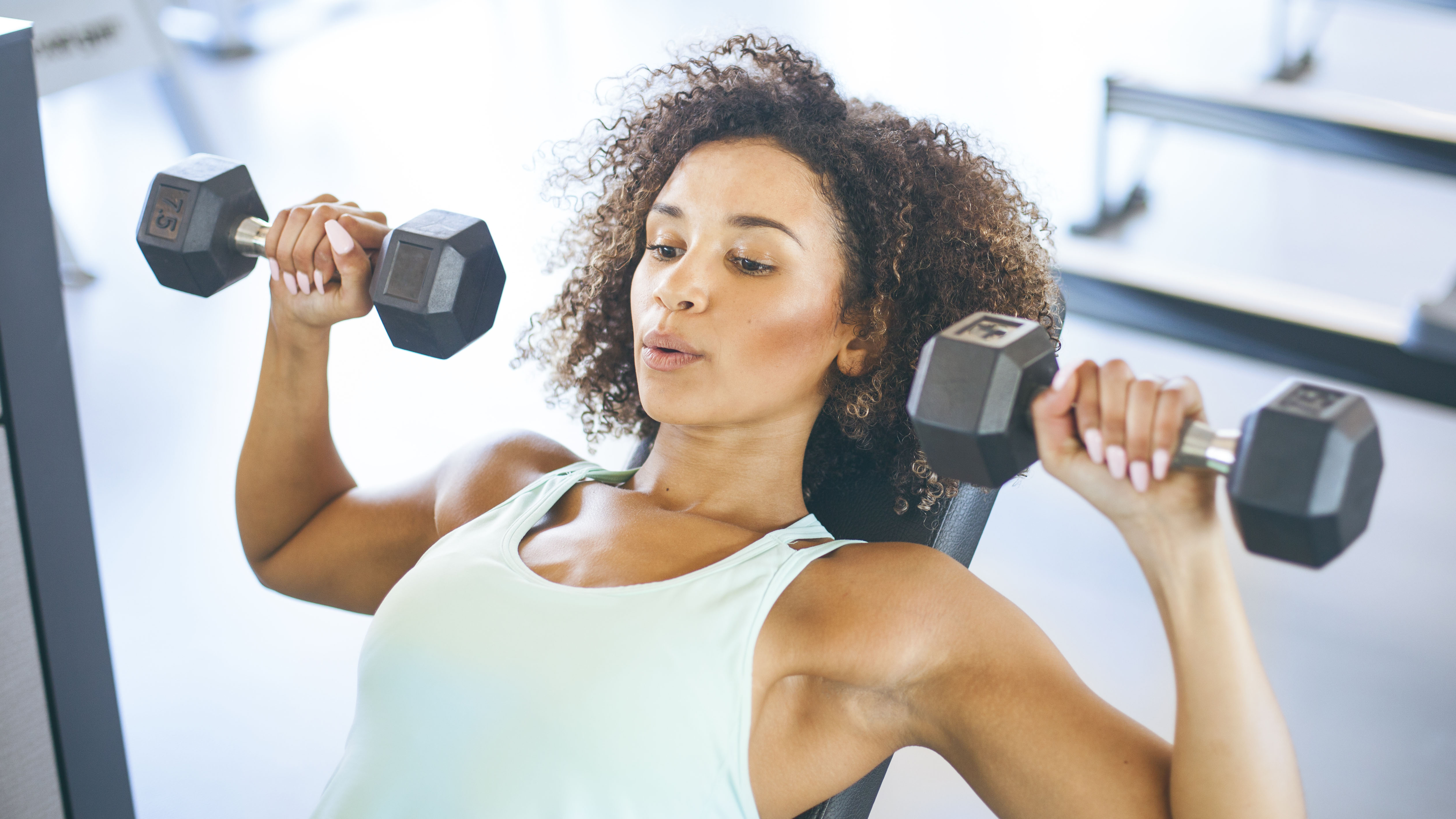
Working your upper body, and particularly your chest muscles, at the gym can become a slog, churning out countless press-ups before moving on to the next muscle group. But our chest muscles are designed to work in more than one way, so sticking to the same single exercise isn’t your best option.
If you take a step back and focus on how the muscles are designed to function, you can choose a few different, focused, chest exercises to get a good-quality workout with variety and a challenge to keep it interesting. Not only will you escape the boredom of a monotonous routine, you’ll get more out of it overall with long-term strength and mobility gains.
Best chest exercises
How can we work the muscles in a varied and challenging way to make sure we keep our posture, strength and mobility throughout our lives? David Birtwistle, the co-founder and head coach at Endeavour Life, has put together his top three exercises for strength, control and building muscle for you to try the next time you’re at the gym.
Some of these exercises just require a simple pair of dumbbells and a bench—you can browse through our round-up of the best adjustable dumbbells here. If you don't have any to hand, head to your local gym to find the best equipment there.
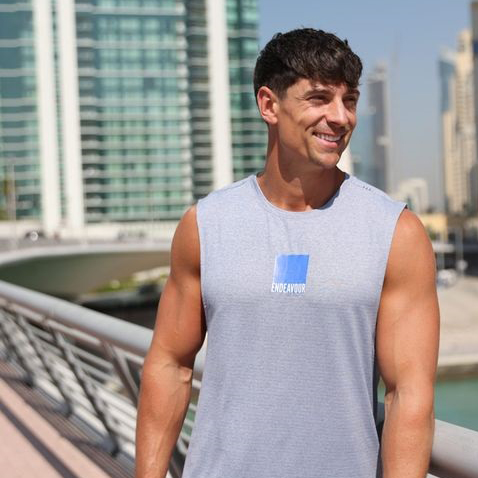
David Birtwistle is a movement and nutrition consultant and founder of Endeavour Life, a coaching company. Since completing his degree in Strength & Conditioning Science at St Mary's University of London, he has gone on to work with a variety of different clients over the last decade and has featured in both Men’s Health & Men’s Fitness magazines.
Barbell bench press
“This bilateral movement utilizes a stable base and closed link between the arms to maximally engage the chest muscles and produce the most force available. This is the movement that will allow you to lift the most weight possible using the chest muscles.
“As the bar is freestanding it can move in multiple directions, which requires the user to stabilize through the shoulder and core creating a more functional exercise than using a machine alternative. One of the reasons that I like this movement is that when spotted correctly, there is little risk of injury. The movement is simple, controlled and repetitive.”

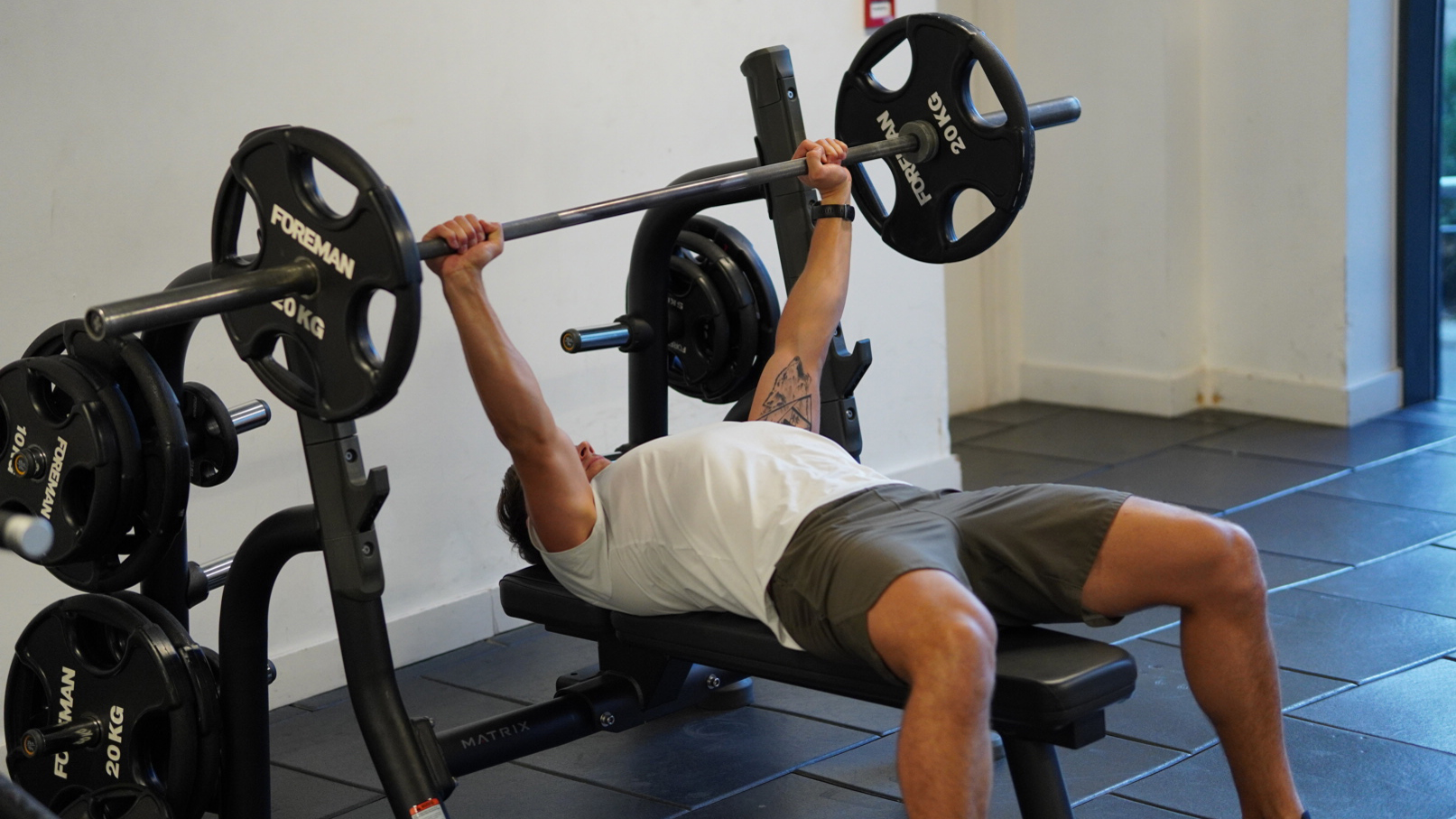
Here’s how to do it:
Get the world’s most fascinating discoveries delivered straight to your inbox.
1) Start by fixing the back and core – creating stiffness through the spine, retracting and depressing the shoulder blades, slightly arching the mid back and plating your feet on the floor. Your upper back is the main point of contact during this exercise, which means it is your foundation of stability. If you fail to create stiffness in your core before lifting, then you will be unstable throughout the lift.
2) Take the weight off the rack and control it to a comfortable position above the chest so that your arms are in a vertical position and the bar feels stable, not falling forward or backwards.
3) Slowly, under control, lower the bar down and touch the chest roughly in line with the nipples. Following this, quickly press the bar away from the chest back to the starting position.
TIP: The last thing you want while bench pressing, is the protraction (rounding) of the shoulder blades as this prevents the chest muscles from maximally activating and activates the anterior shoulder muscles instead.
Incline dumbbell press
This unilateral movement requires an increase in stability of the shoulder to control the dumbbell and develops the upper portion of the chest. As the hands are not connected (like with a barbell) the dumbbells are free to move in any direction and irrespective of the movement of the other. This means that a novice lifter will need to increase their concentration to control the weights. If done correctly, this movement is one of the best ways to increase the strength and size of the upper chest, while improving the stability of the shoulder.
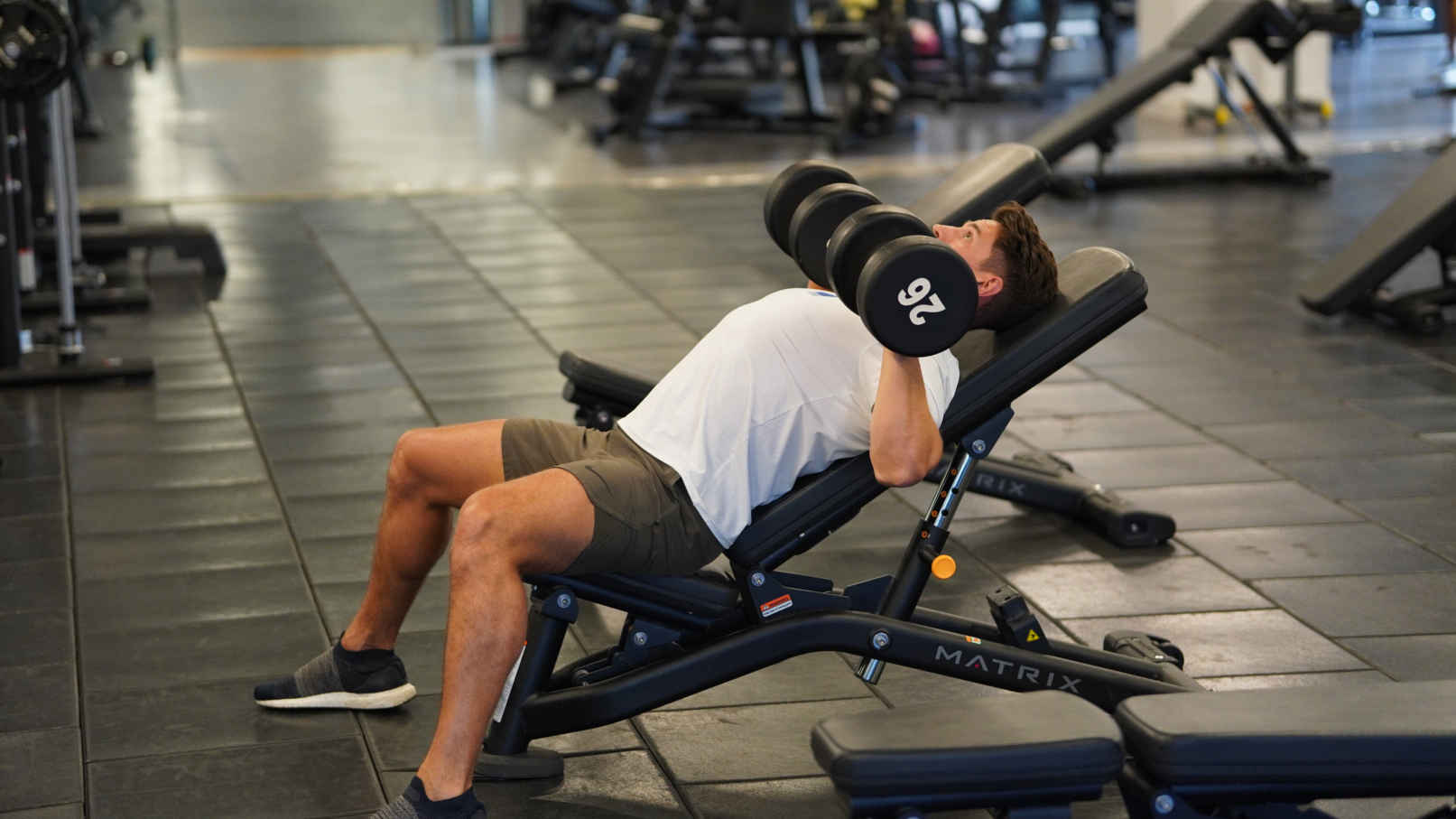
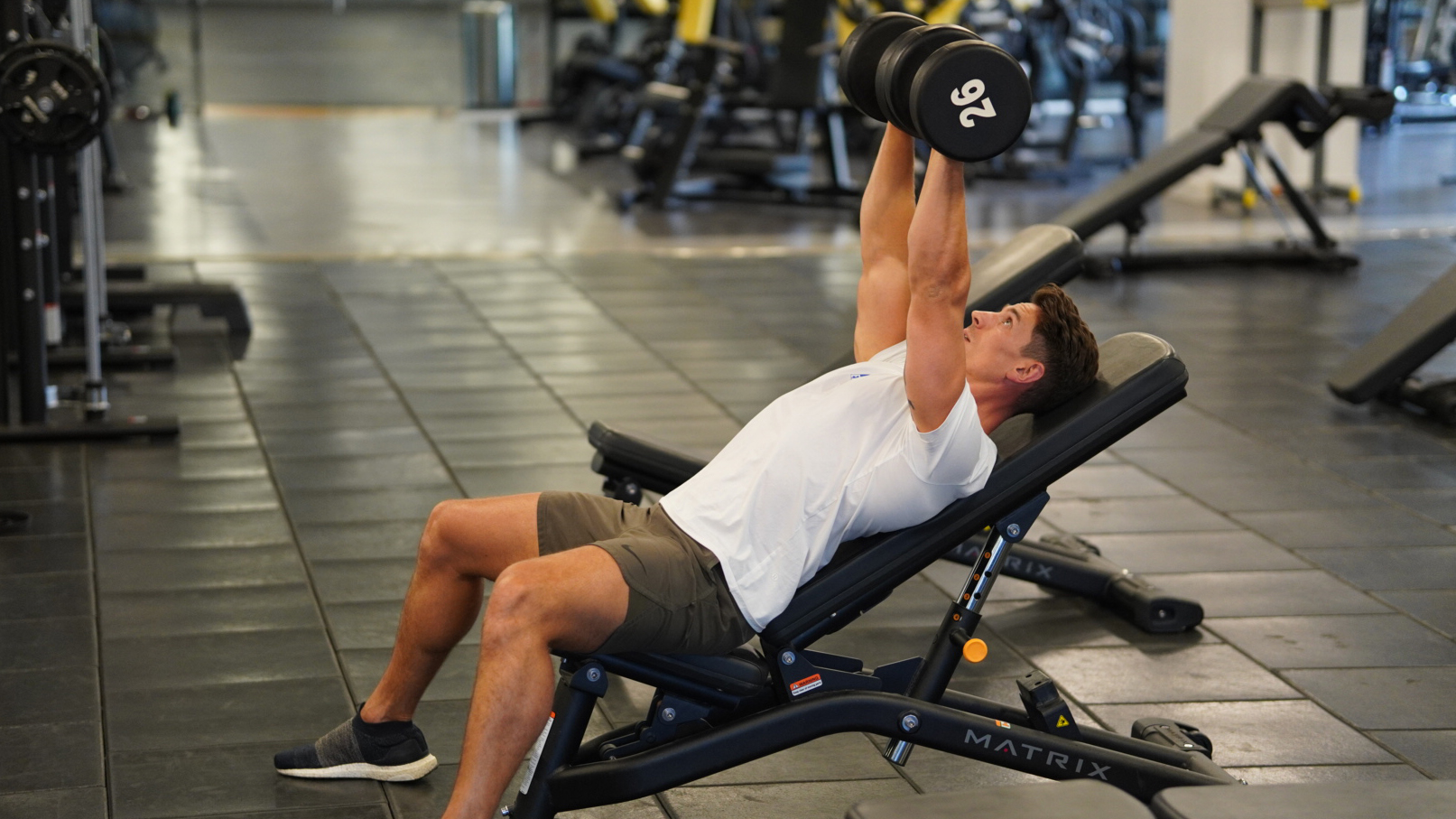
Here's how to do it:
1) Set up the bench to a 30°/40° angle depending on what feels best for you. Like with the bench press, start by retracting and depressing the shoulder blades, activating the mid back and slightly arching it to create a stable base. The more that you arch your back while performing this movement, the higher the angle the bench should be set at. It is important that there is enough angle to target the upper chest, and too much arch will prevent this.
2) Once the weights are safely above your head with straight arms, slowly begin lowering the weights towards your chest. If you imagine that the dumbbells are connected by a piece of string, that piece of string should touch just under your collar bone.
3) From this position, quickly, with control, push the weights away from the body and focus on trying to drive your elbows together and squeezing the chest together.
TIP: A mistake many people experience is to make the touch point too low down the chest, this puts the shoulder in a less advantageous position and will reduce the activation of the upper chest.
Alternating flat dumbbell bench press
This alternating unilateral movement is wonderful for creating control through the chest and shoulder, while stabilizing the spine as it resists rotation. This is more of a functional movement as we are utilizing one arm to push, while controlling the body, explains Birtwistle.
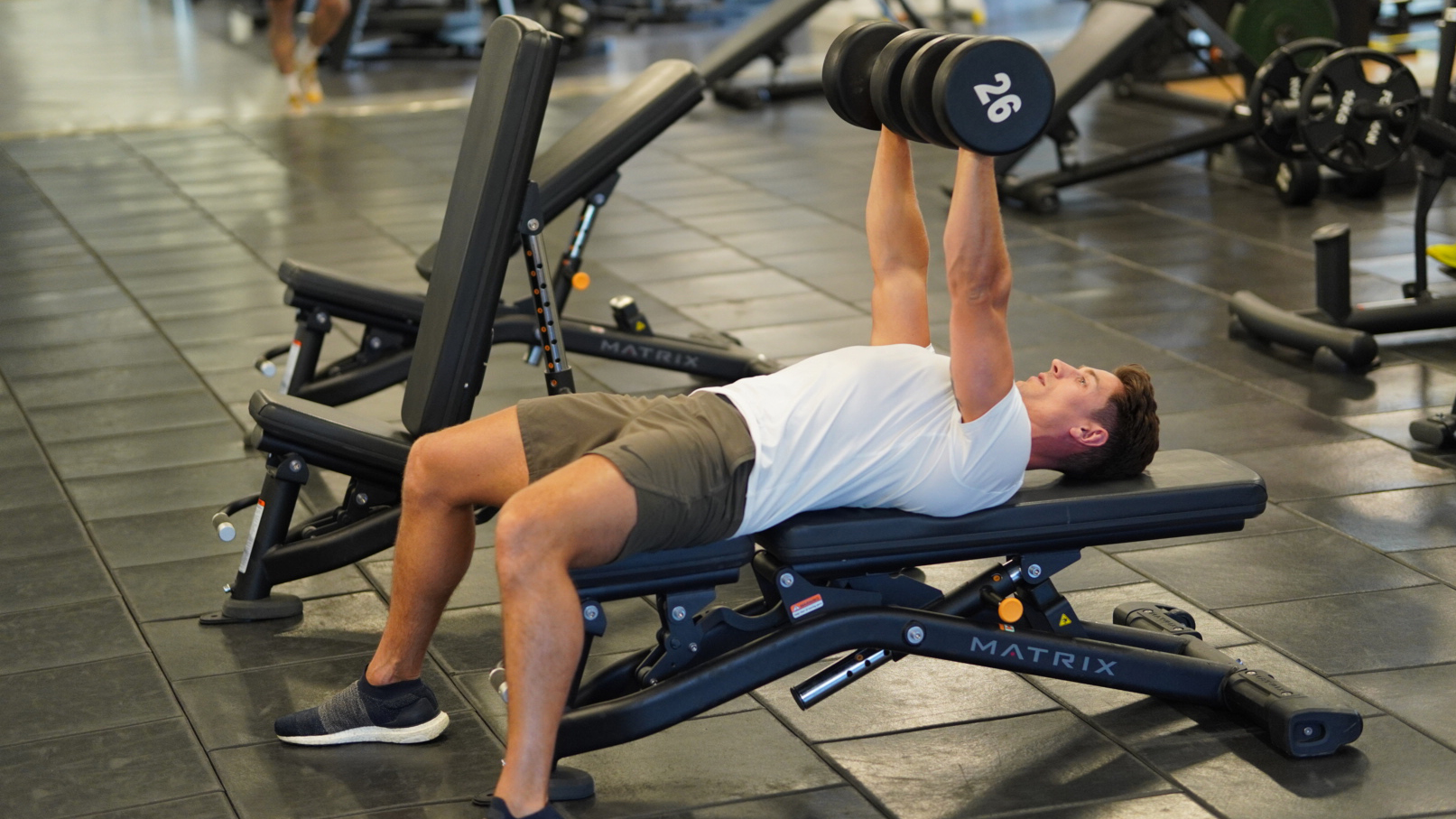
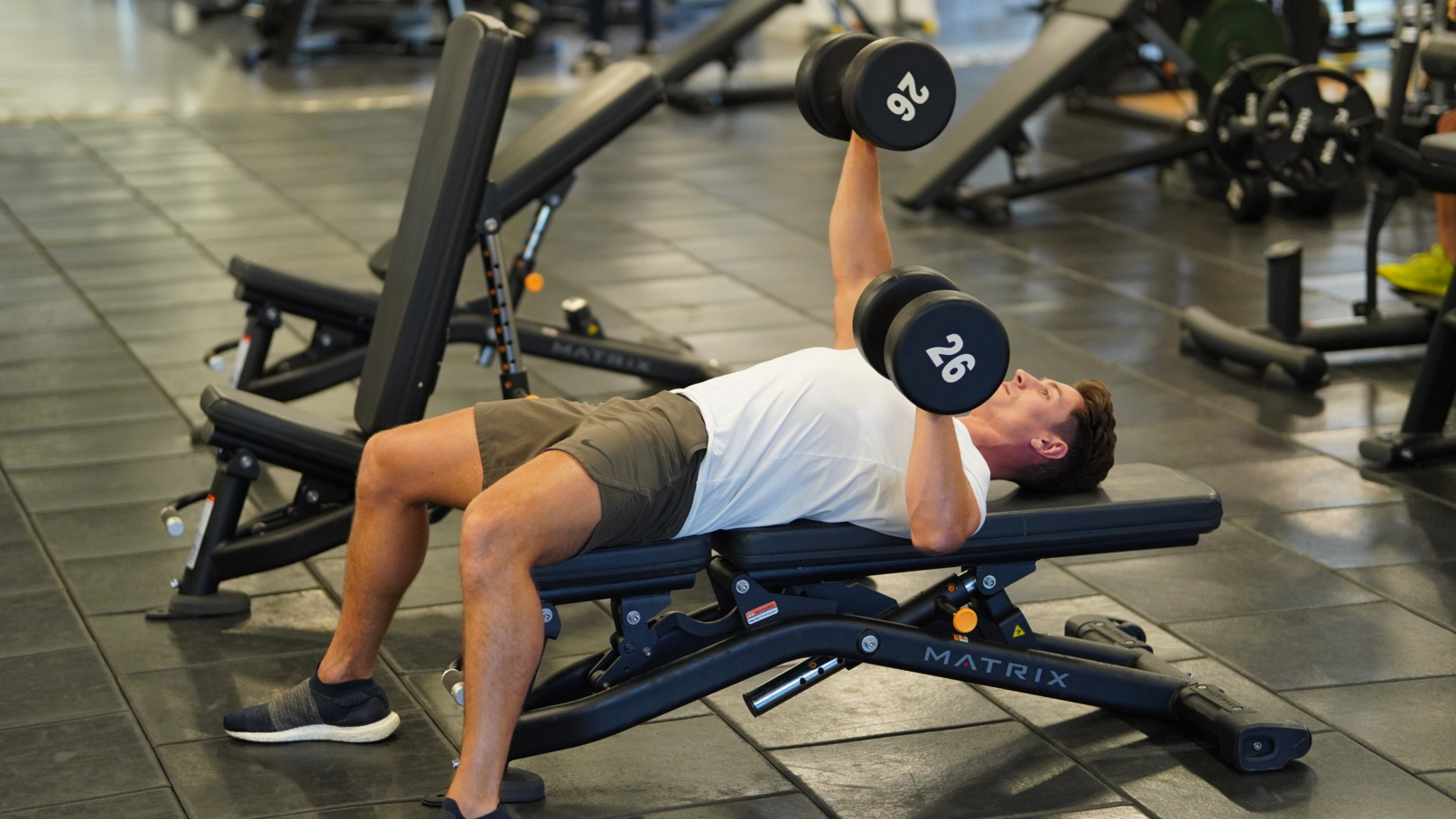
Here's how to do it:
1) Like with both previous exercises, start by retracting and depressing the shoulder blades, then lifting the weights into a stable position above the chest.
2) From this point, begin to lower one side down towards the chest, keeping the wrist over the elbow. Once the weight is roughly in line with your nipple, press it back up to the starting position. Repeat this on the other side.
TIP: It is important with this movement that you resist the force of rotation and keep your body still throughout. The only movement should be the arm that is supposed to move. Ensuring you have a stable base is essential and that you are listening to how your body feels during the lift, so that you repeatedly perform the lift correctly.
What do chest muscles do?
Jo Snell is a chartered physiotherapist at PureForm Clinic in Beckenham, UK. She says, “There are a number of muscles in the chest area that are responsible for moving the arms up, down, and across the body, in addition to rotational movements of the shoulder. No one muscle does one of these movements, like other areas in the body they work synergistically.
"The dominant muscle in the upper chest is the pectoralis major. This large fan-shaped muscle stretches from the armpit up to the collarbone and down across the lower chest region on both sides of the chest. It moves each shoulder joint in four directions (flexion, extension, abduction, and adduction), and also keeps the arms attached to the body.
“The pectoralis minor is underneath the pectoralis major and runs up and down along the upper ribs. Without the pectorals, the shoulder would be unstable and struggle to achieve full and pain-free movements.”
Jo Snell is a chartered physiotherapist. Since graduating in 2015 she has worked across London, UK for a number of NHS trusts, major hospitals and sports clubs, and is currently based at PureForm clinic. She specialises in post operative rehabilitation and knee injuries, helping patients back to full fitness and to achieve their sporting goals. She is a keen skier and road cyclist and has successfully rehabilitated herself back from surgery after rupturing her ACL playing netball.
So, the pectorals are important, and a lot of gym-goers are already aware of this, but as with all muscles in our body, they don’t do the job alone.
“Muscles all over the body work interactively to produce movement and power. The chest muscles work especially closely with the rotator cuff muscles of the shoulder and muscles of the upper back,” says Snell. “For example, the deltoid muscle is the muscle that gives your shoulder its rounded shape and works closely with the pecs to inwardly rotate your arm. The pecs also work with the trapezius muscle, which extends across the neck, shoulder and back and produce movements of the shoulder and shoulder blades.”
It's not only important to have strong chest muscles for movement, but for posture and mobility going forward in life.
“Having strong pec muscles contributes to your ability to throw, swing and push. In conjunction with a strong upper back, they are important for posture and preventing a rounded upper back,” says Snell.
And anyone who has a job sitting in front of a computer all day take heed: “It is important that you maintain the length of your pecs with regular mobility and stretching exercises. The longer we sit at a desk or slouched, the more the muscles of the upper back have to resist a gravitational pull. Over time, these muscles weaken and stiffen. By ensuring you keep your chest muscles strong with regular appropriate loading, they should help to support an overloaded ribcage from the front,” she says.
This article is not meant to offer medical advice and readers should consult their doctor or healthcare professional before adopting any diet or exercise regime.
Amy Curtis is a personal trainer, Pilates instructor and freelance journalist, based in London. She has worked as a magazine editor for Running and Outdoor Fitness and contributed to fitness websites including run247.com and getsweatgo.com. She specialises in women’s fitness, helping women through different stages of their life, from pregnancy to post-natal to menopause. She also works with runners, in particular using Pilates to help build strength for training. Amy is a keen runner herself, and has covered distances from 5km to ultra-marathon.



